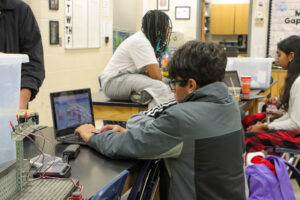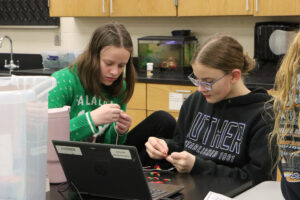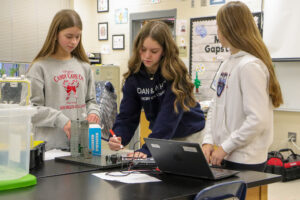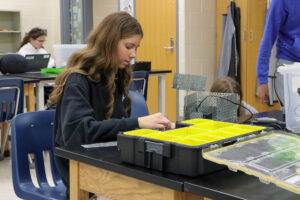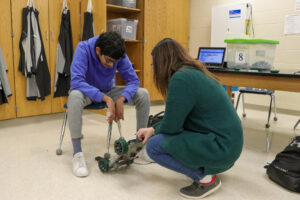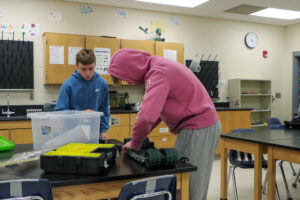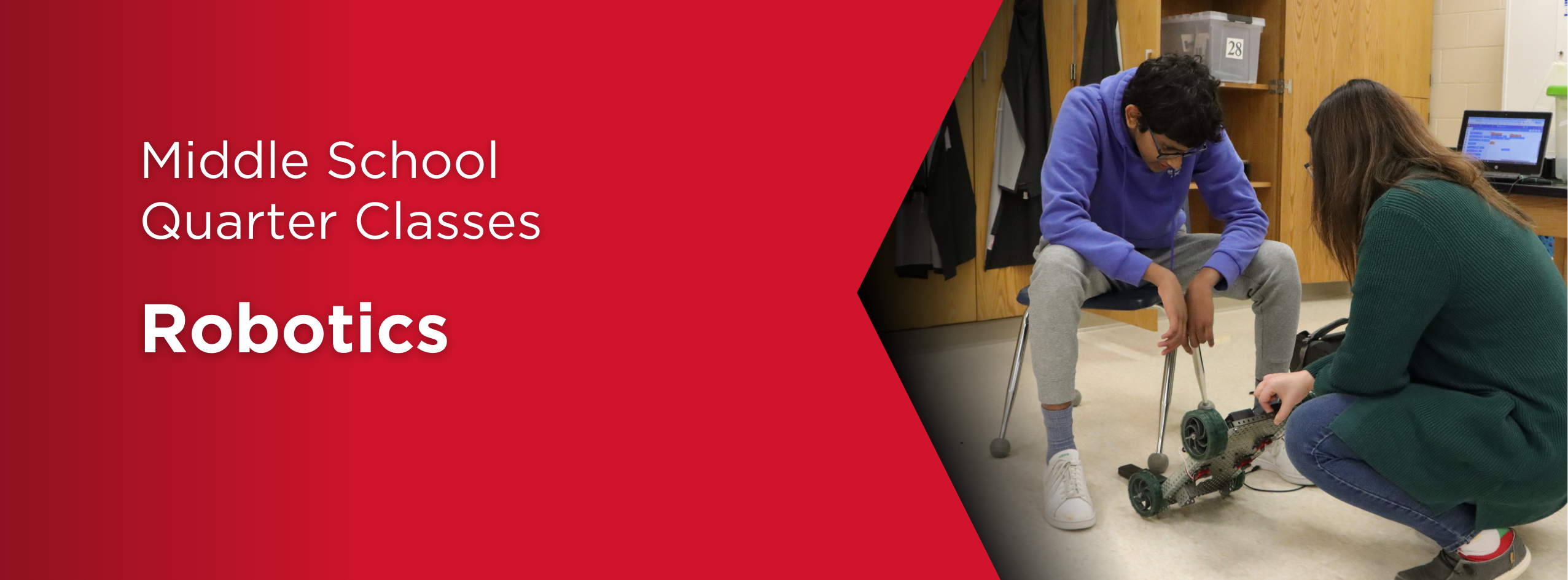
Middle School Students Gain Confidence and Technical Skills Through Robotics
What Students Learn in Robotics Class
The robotics program at Oak Ridge and Excelsior Middle Schools offers students a unique hands-on learning experience. Throughout the quarter, students work on a variety of projects that introduce them to the world of engineering, coding, and problem-solving. Michelle Gapstur, the robotics teacher at Oak Ridge Middle School, explains that the course begins with foundational lessons in building simple mechanisms using gears and gear trains. From there, students progress to group projects where they are tasked with designing and building solutions based on client briefs.
“Our final project incorporates everything we’ve taught so far, from mechanical building to coding with motors, sensors, and LED lights,” said Gapstur. “Students learn not only to create their designs, but also to automate them with programming.”
In addition to Gapstur’s approach, Scott Wynkoop, the robotics teacher at Excelsior Middle School, emphasizes coding early on in the quarter. Students begin with virtual robotics programming, tackling challenges such as navigating a maze with their robot. This initial coding experience sets the stage for their work with mechanical builds, as they apply the engineering design process.
Skills Developed and Key Takeaways of Robotics
Both Gapstur and Wynkoop highlight the development of key skills that students acquire through the course. In addition to technical skills in building and programming, students also sharpen their teamwork and collaboration abilities. Gapstur notes that working in groups encourages students to express creativity and adapt to different ideas, as there is no single right answer in engineering.
Wynkoop agrees, adding that students learn to navigate group dynamics and compromise when working on their projects. “They learn it’s okay to make mistakes. In fact, mistakes are valuable because they help you grow,” he said. “The engineering process is all about testing, adjusting, and trying again.”
The class also fosters a sense of independence. “At the beginning, students often want to be told exactly how to do something, but I encourage them to problem-solve on their own,” said Gapstur. “Through guiding questions, they learn to think critically and find solutions themselves.”
Both teachers hope that students walk away from the course with more than just technical knowledge. “I think the best part of this class is that students get a taste of something they may never have tried before,” said Wynkoop. “It opens their eyes to careers they might not have considered and helps them develop confidence.”
Students often surprise themselves with their own creativity and problem-solving skills. “I love seeing the innovative projects they create, whether it’s a pull toy or a more complex design,” said Gapstur. “They come up with clever, unexpected solutions, and it’s so rewarding to see them bring their ideas to life.”
For Wynkoop, the most gratifying part of teaching robotics is watching students gain self-confidence. “They start with no experience and, by the end, they feel proud of what they’ve accomplished,” he said. “Seeing their growth and excitement is the most rewarding aspect of this class.”
Preparing for the Future
Ultimately, both teachers agree that robotics classes provide students with essential skills for their future educational and career paths. “These classes offer a taste of what high school classes might be like, and it’s important for students to discover what they enjoy early on,” said Gapstur. “When they reach high school, they’ll have a better sense of which subjects and activities they are passionate about.”
Wynkoop emphasizes that robotics allows students to make connections between classroom learning and real-world applications. “One student realized that their garage door opener uses a chain drive, and another noticed a worm and wheel mechanism on a violin,” he said. “Those moments of realization are exactly what this class is about—connecting learning to the world around them.”
Through creativity, problem-solving, and collaboration, students in the robotics program are not only developing technical skills, but also gaining confidence and discovering new interests that may shape their future careers.

